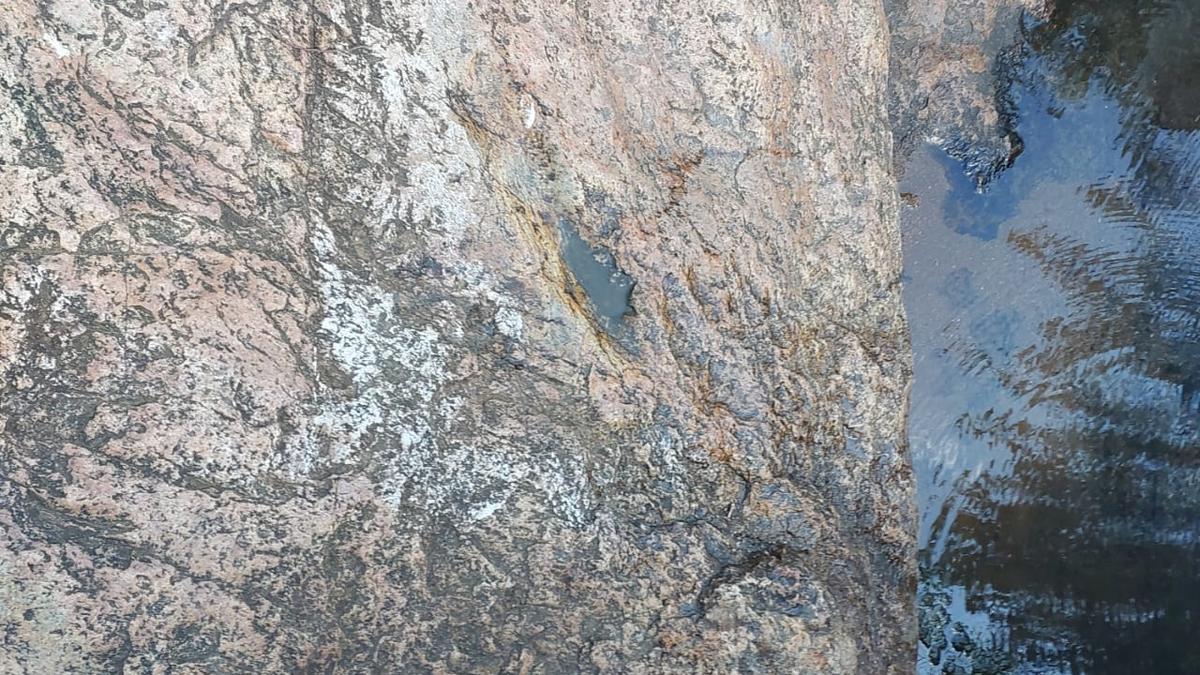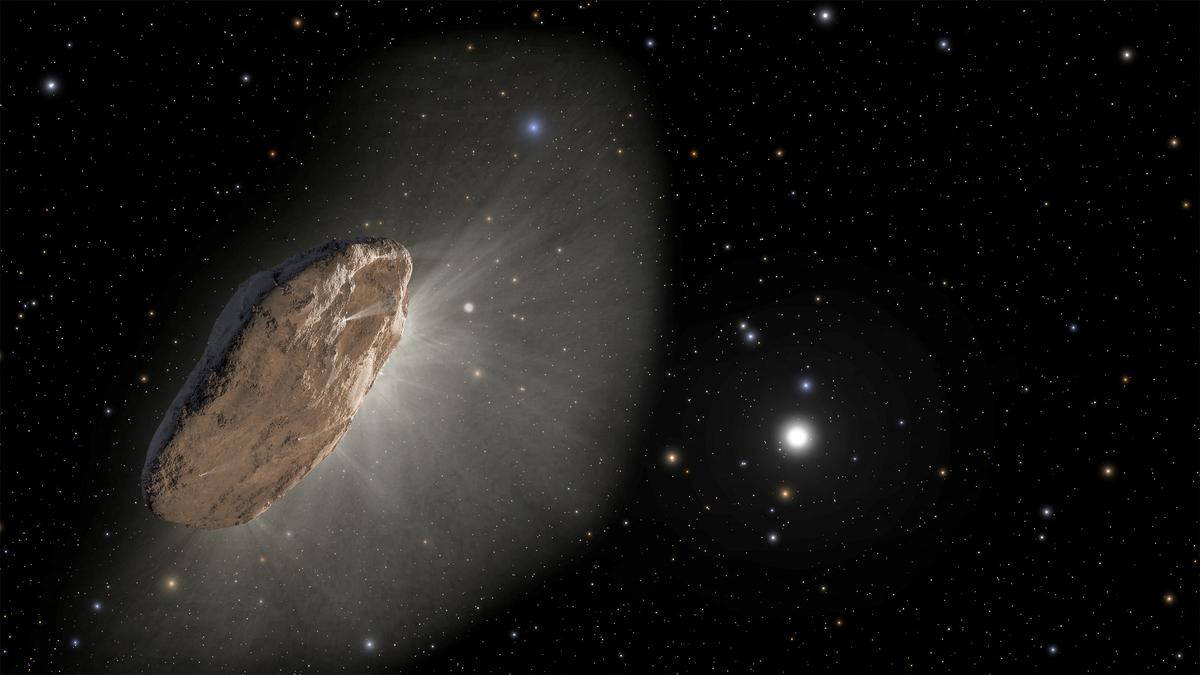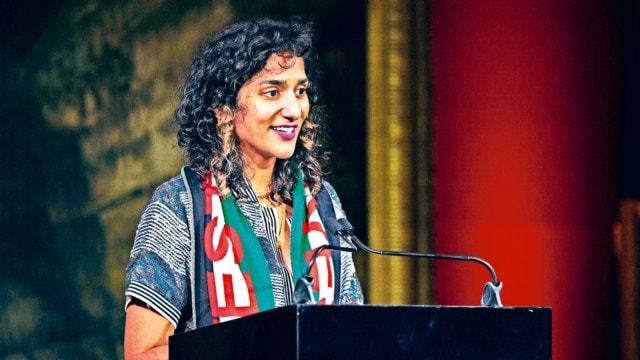ASI Discovery at Srisailam Temple

- 30 Dec 2024
In News:
- The Archaeological Survey of India (ASI) uncovered ancient copper plates and gold coins at the Srisailam Temple in Andhra Pradesh, specifically in the Ghantamandapam area.
- The discovery includes 20 sets of copper plates, totaling 72 leaves, and various gold coins.
- The ASI's Epigraphy Branch in Mysore has completed the documentation of these findings, and the materials are being studied in detail.
Collaboration with Srisailam Devasthanam:
- In collaboration with the Srisailam Devasthanam, ASI plans to publish a book that will detail the findings and their historical significance.
- The book will be printed soon by Pragati Publications in Hyderabad.
Srisailam Temple Overview:
- The Srisailam Temple, also known as the Mallikarjuna Swamy Temple, is a prominent Hindu pilgrimage site in Andhra Pradesh.
- It is located in the Nallamala Hills, overlooking the Krishna River.
- The temple is dedicated to Lord Shiva in the form of Mallikarjuna Swamy and Goddess Parvati as Bhramaramba Devi.
- It is one of the 12 Jyotirlingas of Lord Shiva and one of the Shakti Peethas, making it significant in both Shaivism and Shaktism.
Architectural Significance:
- The temple is built in the Dravidian style, featuring lofty towers and expansive courtyards, and is considered a prime example of Vijayanagara architecture.
- Historical references to the temple date back to the Satavahana period (2nd century AD), and the temple was further endowed by the Kakatiyas and Vijayanagara rulers.
Cultural and Religious Importance:
- The Srisailam Temple is unique for housing both a Jyotirlinga (Lord Shiva) and a Shakti Peetha (Goddess Bhramaramba), a rare combination not found at other temples.
- The great religious figure Adi Shankaracharya is believed to have visited the temple and composed the Sivananda Lahiri there.
Historical Context:
- The copper plates and inscriptions discovered are likely to provide valuable insights into the historical and cultural significance of the temple, as well as the region's ancient religious practices.
Neolithic Age Grooves Discovery Near Boothapandi

- 28 Dec 2024
In News:
- Archaeological Survey of India (ASI) discovered rock grooves created during the Neolithic age near Boothapandi village, Kanniyakumari district.
- The discovery was made by K. Hari Gopalakrishnan (Archaeological Officer, Tirunelveli and Kanniyakumari districts) and M. Faisal (Sembavalam Research Centre).
Key Highlights:
- Groove Characteristics:
- The grooves are approximately 4,000 years old, formed by Neolithic people for tool sharpening.
- Tools used for activities like hunting, ploughing, and digging were sharpened here.
- The grooves resulted from wear and tear of tools that had broken or worn out during use.
- Groove Dimensions:
- Largest groove: 15 cm in length, 4 cm in width.
- Smallest groove: 8 cm in length, 3 cm in width.
- Similar Discoveries:
- Similar grooves have been found in other parts of Tamil Nadu, including Krishnagiri, Tiruvannamalai, and Villupuram.
- Significance:
- The grooves provide evidence of Neolithic human habitation in the region.
- Ongoing excavations are expected to uncover more about Neolithic culture in the area.The Hindu
Kilauea Volcano

- 24 Dec 2024
In News:
Kilauea volcano erupts on Hawaii's Big Island.
Location:
- Kilauea is located on the southeastern shore of Hawaii’s Big Island, within Hawaii Volcanoes National Park.
Type of Volcano:
- Active Shield Volcano – Kilauea is a shield volcano, meaning it has broad, gentle slopes due to the eruption of fluid lava, which flows easily across large areas. Its eruptions tend to be less explosive than those of other types of volcanoes, creating a relatively safe environment for research and tourism compared to more volatile volcanoes.
Key Features:
- Summit Caldera: Kilauea has a large caldera at its summit, Halema'uma'u, which is a major volcanic feature. The caldera formed from the partial collapse of the volcano after the eruption of large amounts of magma. The caldera spans around 3 miles in length and 2 miles in width, covering an area of over 4 square miles.
- Rift Zones: Kilauea has two active rift zones stretching to the east and southwest, which are areas where lava can erupt and spread across the island. These rift zones are responsible for much of the volcanic activity.
- Lava Flows: Over the last 1,000 years, Kilauea has covered 90% of its surface with lava flows, making it one of the most active volcanoes in the world. It is known for producing highly fluid lava, which allows the lava to travel long distances from the eruption site.
- Historical Activity: Kilauea has had near-continuous eruptions in modern history, particularly between 1983 and 2018, with 34 eruptions since 1952. The volcano has remained active with frequent eruptions, and its lava lake was visible at the summit until 1924.
- Mythological Significance: The volcano is considered the home of Pele, the Hawaiian goddess of fire, lightning, and volcanoes. The Halema'uma'u crater is especially sacred, as it is believed to be the goddess's dwelling place.
Why is Kilauea Significant?
- Active and Young: Kilauea is one of the youngest volcanic products of the Hawaiian hotspot, a series of volcanic islands formed by the movement of the Pacific plate over a stationary plume of hot material beneath the Earth’s crust.
- Continuous Eruptions: It has been erupting regularly, with the exception of a quiet period between 1924 and 1952. Its eruptions are a significant natural phenomenon that scientists and visitors closely monitor.
- Proximity to Mauna Loa: Kilauea is located near Mauna Loa, another active shield volcano. Together, these two volcanoes form a large volcanic region, and their slopes merge seamlessly, making this area home to two of the world's most active volcanoes.
Shield Volcanoes and Kilauea
- Shield Volcanoes: A shield volcano is characterized by its broad, gentle slopes. These slopes are formed by repeated eruptions of fluid basalt lava, which spreads easily over large areas. Unlike composite volcanoes, which have steep, conical shapes, shield volcanoes like Kilauea have a much wider, dome-like appearance.
- Low Explosivity: Eruptions from shield volcanoes are generally low in explosivity, and lava flows are typically slow-moving. However, explosive events can occur if water interacts with lava, but this is relatively rare in Kilauea's eruptions.
Kilauea's Current Activity
In December 2024, Kilauea began erupting again, continuing its pattern as one of the most active volcanoes in the world. This eruption has once again drawn attention to the ongoing volcanic activity on the Big Island of Hawaii, as the volcano regularly contributes to the reshaping of the island and its landscape.
Other Volcanoes in India:
While Kilauea is known for its active status, India also has volcanic features, although most are dormant or extinct:
- Barren Island (Andaman Islands) – India’s only active volcano.
- Narcondam (Andaman Islands) – A dormant volcano.
- Baratang (Andaman Islands) – Known for mud volcanoes.
- Deccan Traps (Maharashtra) – A vast volcanic plateau formed by ancient eruptions.
- Dhinodhar Hills (Gujarat) – Extinct volcano.
- Dhosi Hill (Haryana) – An ancient volcanic site with historical significance.
2023 National Tansen Samman

- 21 Dec 2024
In News:
- The prestigious National Tansen Samman for 2023 was conferred upon Pt. Swapan Choudhary, a renowned tabla maestro from Kolkata, at the National Tansen Festival held in Gwalior, Madhya Pradesh.
Key Highlights:
- Tansen Festival: This festival, renowned for its celebration of classical music, is organized annually in Gwalior, which is considered the music capital of Madhya Pradesh.
- Prize Details: As part of the honor, Pt. Swapan Choudhary was presented with an honorarium of five lakh rupees, a citation plaque, and a shawl-shriphal.
- About the Award:
- The National Tansen Samman was established in 1980 by the Madhya Pradesh government to recognize exceptional contributions to Indian classical music.
- It is named after Tansen, one of India's most celebrated classical musicians.
- The award is the highest national honor in the field of Indian classical music.
- Additional Award:
- Raja Mansingh Tomar Samman for 2023 was awarded to Sanand Nyas, an institution from Indore. This institution has been active for 35 years in the promotion of classical music, drama, and cultural festivals.
- Pt. Swapan Choudhary’s Remark: In response to receiving the honor, Pt. Choudhary expressed his gratitude and pride in joining the ranks of distinguished artists awarded the National Tansen Samman.
About Tansen: The Iconic Musician
- Legacy: Tansen, also known as Miyan Tansen, was a prominent Indian classical musician, composer, and vocalist. He is credited with popularizing several ragas and revolutionizing the Indian classical music tradition.
- Role at Akbar’s Court: Tansen was one of the Navaratnas (nine jewels) in the court of Mughal Emperor Akbar. He held the title of Mian, meaning "learned man," bestowed upon him by Akbar.
- Contributions:
- Tansen is famous for his compositions, including the introduction of notable ragas such as Miyan ki Malhar, Miyan ki Todi, and Darbari.
- He also improved the plucked rabab, which is of Central Asian origin, enhancing its role in Indian classical music.
- Historical Influence: Tansen's life and work are surrounded by extensive legend, and his contributions remain deeply influential in the development of Indian classical music today.
Dark Comets

- 20 Dec 2024
In News:
Dark comets are a newly identified class of celestial objects that challenge our traditional understanding of comets and asteroids. Unlike regular comets, these objects exhibit characteristics that blur the lines between comets and asteroids, leading astronomers to closely study their nature, origin, and significance.
Discovery and Background
The first hint of dark comets appeared in 2016, when asteroid 2003 RM exhibited strange orbital deviations that suggested it might be a comet in disguise. NASA further fueled this interest in 2017 when it discovered ‘Oumuamua, an interstellar object that entered our Solar System. Though initially classified as an asteroid, its erratic motion and lack of a visible tail led scientists to consider it a dark comet. Since then, several more objects with similar characteristics have been discovered, and astronomers now identify these objects as a new class—dark comets.
Characteristics of Dark Comets
- Appearance: Dark comets do not exhibit the brilliant, glowing tails typically associated with comets. Instead, they resemble asteroids, appearing as faint points of light in space. Unlike bright comets, they do not have a visible coma (a cloud of gas and dust) or a tail, making them much harder to detect.
- Size: Dark comets are typically small, ranging from a few meters to a few hundred meters in diameter. Due to their small size, there is less surface area for material to escape, preventing the formation of the iconic tails seen in traditional comets.
- Orbital Path: These objects follow elongated, elliptical orbits. While some of them travel close to the Sun, they can also venture to the outer reaches of the Solar System, far beyond Pluto, and even into the Oort Cloud—the distant region where long-period comets are believed to originate.
- Spin and Gas Dispersion: Dark comets often rotate rapidly, dispersing gas and dust in all directions. This rapid spin contributes to their invisibility, as the gas and dust are scattered evenly, making it more difficult for astronomers to detect their presence.
- Composition: The composition of dark comets may also play a role in their lack of visibility. Over time, the materials that form the bright tails of comets may be depleted, especially for older objects. As a result, dark comets may not release enough gas to produce a visible coma or tail.
Types of Dark Comets
There are two main categories of dark comets:
- Inner Dark Comets: These are smaller objects that reside closer to the Sun and typically travel in nearly circular orbits. They are often just a few meters in size, with less surface area for gas and dust to escape.
- Outer Dark Comets: These larger objects, measuring over 100 meters in diameter, travel in highly eccentric orbits, similar to Jupiter-family comets. These dark comets follow elliptical paths that bring them close to the Sun and then send them back toward the outer reaches of the Solar System.
Importance of Studying Dark Comets
Dark comets may hold critical clues about the early Solar System and the formation of Earth. Studying these objects can provide insights into the origins of water on Earth, as well as the ingredients necessary for life. Their unique composition and orbits also offer potential for understanding the processes that led to the formation of planets.
Recent Discoveries and Advancements
Astronomers recently discovered 10 new dark comets with the help of the Dark Energy Camera (DECam) on a large telescope in Chile. The DECam, designed to study distant galaxies and stars, has enabled researchers to detect these faint objects by analyzing images of the night sky. Further progress is expected with the upcoming Vera C. Rubin Observatory, which will feature the largest digital camera ever built. This new instrument will allow astronomers to capture more detailed images of the night sky and detect fainter objects, potentially doubling or even tripling the number of known dark comets in the next decade.
Key Facts:
- Dark comets lack the characteristic glowing tails of typical comets, instead resembling asteroids.
- They exhibit erratic motions and follow elliptical orbits, often extending beyond Pluto and into the Oort Cloud.
- They are typically small (a few meters to hundreds of meters wide) and spin rapidly.
- The first dark comet was identified in 2016, with more discoveries made in the years since.
- The Dark Energy Camera (DECam) in Chile has been instrumental in detecting these elusive objects, with a new Vera C. Rubin Observatory expected to further enhance detection in the future.
- Studies suggest that between 0.5% and 60% of Near-Earth Objects (NEOs) could be dark comets, many originating from the asteroid belt between Mars and Jupiter.
Cyclone Chido
- 18 Dec 2024
In News:
Cyclone Chido makes landfall in Mozambique after leaving trail of destruction in French-administered Mayotte.
About Cyclone Chido:
- Location and Impact:
- Cyclone Chido struck Mayotte, a French overseas territory in the Indian Ocean, in December 2024.
- It is the strongest storm to hit Mayotte in at least 90 years.
- Cyclone Characteristics:
- Wind speeds exceeded 200 km/h (124 mph), with gusts surpassing 225 km/h (140 mph).
- The cyclone caused significant devastation to the region, prompting expressions of condolences from global leaders.
- Cyclone Classification:
- According to the Indian Meteorological Department (IMD), cyclones are classified based on wind speed:
- Depression: 31–49 km/h
- Deep Depression: 50–61 km/h
- Cyclonic Storm: 62–88 km/h
- Severe Cyclonic Storm: 89–117 km/h
- Very Severe Cyclonic Storm: 118–166 km/h
- Extremely Severe Cyclonic Storm: 167–221 km/h
- Super Cyclonic Storm: Above 222 km/h
- Cyclone Chido was classified as a Super Cyclonic Storm, based on its wind speeds exceeding 222 km/h.
- According to the Indian Meteorological Department (IMD), cyclones are classified based on wind speed:
About Mayotte:
- Geography:
- Mayotte is an archipelago in the Mozambique Channel, between Madagascar and the coast of Mozambique.
- It consists of two main islands: Grande Terre (the larger main island) and Petite Terre (the smaller island of Pamandzi).
- Political and Economic Context:
- Mayotte is an overseas department of France, and it is the poorest territory in both France and the European Union.
- France colonized Mayotte in 1843 and annexed the entire Comoros archipelago in 1904.
- A 1974 referendum showed that 95% of Comoros voters favored independence, but 63% of Mayotte's population voted to remain part of France. Subsequently, Grande Comore, Anjouan, and Moheli declared independence in 1975.
- Mayotte remains administratively under French governance.
- Biodiversity:
- Mayotte is renowned for its rich biodiversity, particularly for having one of the world’s largest enclosed lagoons.
Cyclones
- What is a Cyclone?
- A cyclone is a large-scale, rotating system of air that forms around a low-pressure area, bringing violent storms and extreme weather conditions.
- In the Northern Hemisphere, cyclones rotate anticlockwise, while in the Southern Hemisphere, they rotate clockwise due to the Coriolis effect.
- Tropical Cyclone Characteristics:
- Calm Centre (Eye): The cyclone’s center, or "eye," experiences relatively calm weather with low air pressure.
- High Wind Speed: Cyclones generally have average wind speeds around 120 km/h.
- Closed Isobars: Isobars (lines of equal atmospheric pressure) are tightly packed, leading to high wind velocities.
- Formation Over Oceans: Cyclones typically form over warm ocean waters.
- East-to-West Movement: Influenced by trade winds, cyclones usually move from east to west.
- Seasonal Nature: Cyclones occur during specific seasons based on regional climatic conditions.
Under the Sal Tree Theatre Festival

- 14 Dec 2024
In News:
“Under the Sal Tree” Theatre Festival, held annually in Rampur, Assam, promotes eco-friendly and sustainable practices in theatre while showcasing rich cultural diversity.
Overview:
- Location: Rampur village, Goalpara district, Assam
- Organizer: Badungduppa Kalakendra, a social and cultural organization
- Founded: 1998 by Sukracharjya Rabha
- Festival Focus: Eco-friendly theatre practices, cultural diversity, and sustainability
Key Features
- Unique Setting: Open-air festival under Sal trees, with no artificial lighting or electric sound systems.
- Sustainability:
- No use of plastic.
- Carbon-neutral, with eco-friendly materials such as bamboo, straw, and cane.
- Performances in natural daylight, avoiding electric lights.
- International Participation: Theatre groups from countries like Poland, South Korea, Brazil, Sri Lanka, Bangladesh, North Korea, Bolivia, and Holland have performed.
- Cultural Celebration: Highlights indigenous art forms, languages, and traditions, e.g., Rabha and Bodo plays.
Festival Activities
- Performances:
- Includes plays like “Dadan Raja” (Rabha language play), “Kindhan Charithiram” (Tamil), and “Kisan Raj” (Hindi).
- Focus on themes such as societal change and resilience of farmers.
- Workshops & Community Projects: For performing artists, promoting artistic innovation and social impact.
- Anniversary Celebrations:
- 25th anniversary celebrated with special events and book releases, e.g., “Resonance: Echoing the Spirit of Badungduppa” and “Sukracharjya Rabha on the Back Stage”.
Impact & Legacy
- Theatre Movement: Celebrates art amidst nature, breaking geographical barriers despite the remote location.
- Founder’s Vision: Sukracharjya Rabha believed in the synergy between art and nature, aiming to bring social change through theatre.
- Local Involvement:
- 20 resident artists contribute to the festival’s success.
- Festival has become a major cultural attraction in Assam, drawing thousands of theatre enthusiasts.
Turner Prize

- 09 Dec 2024
In News:
Jasleen Kaur, a 38-year-old Indian-origin Scottish artist, has won the prestigious Turner Prize 2024 for her exhibition "Alter Altar". This win highlights Kaur’s unique ability to weave together personal, political, and spiritual elements into a cohesive artistic expression. The exhibition explores themes such as plurality, migration, and cultural identity, drawing from Kaur’s own family history and experiences.
Exhibition Overview:
"Alter Altar," which was first showcased in Glasgow, features an array of everyday objects and cultural symbols, including:
- A vintage red Ford Escort covered in a large crocheted doily, symbolizing her father’s migrant aspirations.
- Worship bells, Irn-Bru orange resin, an Axminster carpet, and family photographs.
- Soundtracks, including music from Nusrat Fateh Ali Khan and Bob Marley, which reflect Kaur’s multicultural upbringing.
The exhibition blends these elements to examine migration, identity, and belonging. The jury, chaired by Alex Farquharson, Director of Tate Britain, praised Kaur’s ability to combine different voices through unexpected and playful material combinations, creating a visual and aural experience that evokes both solidarity and joy.
Personal and Political Reflection:
Kaur’s work reflects on the Sikh concept of Miri Piri, which represents the balance between the political and the spiritual. This duality is central to her exploration of cultural practices and the effects of violence, colonialism, and empire on these traditions. In her acceptance speech, Kaur also addressed political issues, calling for a ceasefire in Gaza and an end to institutional complicity in Israel's actions.
About the Turner Prize:
The Turner Prize, established in 1984, is one of the most prestigious awards in contemporary British art. It aims to recognize recent developments in British art. Kaur’s win is particularly significant as it marks the 40th anniversary of the award. Previous winners include renowned Indian-origin artists such as Anish Kapoor (1991).
Status of Classical Language: An Explainer

- 04 Oct 2024
In News:
The Union Cabinet has approved to confer the status of Classical Language to Marathi, Pali, Prakrit, Assamese and Bengali languages.
Why is a language declared as Classical?
Designating a language as classical acknowledges its historical significance and its role in preserving Bharat’s rich cultural heritage. These languages have been crucial in transmitting ancient knowledge, philosophies, and values for millennia. Government recognition emphasizes their deep antiquity and literary traditions, enhancing their status and promoting efforts for their preservation and research, ensuring their relevance in the modern world.
What are the criteria for declaring a language as classical?
In 2004, the Government of India, for the first time, created a new category of languages known as Classical Languages. It set the following as criteria for the status of Classical Language:
- High antiquity of its early texts/ recorded history over a thousand years.
- A body of ancient literature/ texts, which is considered a valuable heritage by generation of speakers.
- The literary tradition must be original and not borrowed from another speech community.
This criterion was revised in 2005 and 2024 based on the recommendations of Linguistic Experts Committees (LEC) under Sahitya Akademi to examine the proposed languages for the status of Classical Language. Later the criteria were revised in 2024 as follows:
- High antiquity of its early texts/recorded history over a period of 1500- 2000 years.
- A body of ancient literature/texts, which is considered a heritage by generations of speakers.
- Knowledge texts, especially prose texts in addition to poetry, epigraphical and inscriptional evidence.
- The Classical Languages and literature could be distinct from its current form or could be discontinuous with later forms of its offshoots.
The 2024 Linguistic Expert Committee also recommended the following languages to be fulfilling revised criteria to be considered as a Classical Language: Marathi, Pali, Prakrit, Assamese, Bengali
How many languages have been declared classical so far?
Languages Date of Recognition Notification by Source/Notification Date
Tamil October 12, 2004 Ministry of Home Affairs October 12, 2004
Ministry of Sanskrit November 25, 2005 Ministry of Home Affairs November 25, 2005
Telugu October 31, 2008 Ministry of Culture October 31, 2008
Kannada October 31, 2008 Ministry of Culture October 31, 2008
Malayalam August 8, 2013 Ministry of Culture August 8, 2013
Odia March 1, 2014 Ministry of Culture March 1, 2014
Steps Taken by the Ministry of Education for Advancing Classical Languages:
- Establishment of Central Universities (2020): Three universities created to promote Sanskrit through an Act of Parliament.
- Central Institute of Classical Tamil:
- Facilitates translation of ancient Tamil texts.
- Promotes research and offers courses for students and scholars.
- Centres for Excellence:
- Established for Classical Kannada, Telugu, Malayalam, and Odia under the Central Institute of Indian Languages in Mysuru.
- Awards: Introduction of national and international awards to recognize achievements in Classical Languages.
- Additional Benefits:
- National Awards for Classical Languages.
- Establishment of university chairs.
- Dedicated centers for promoting Classical Languages.
